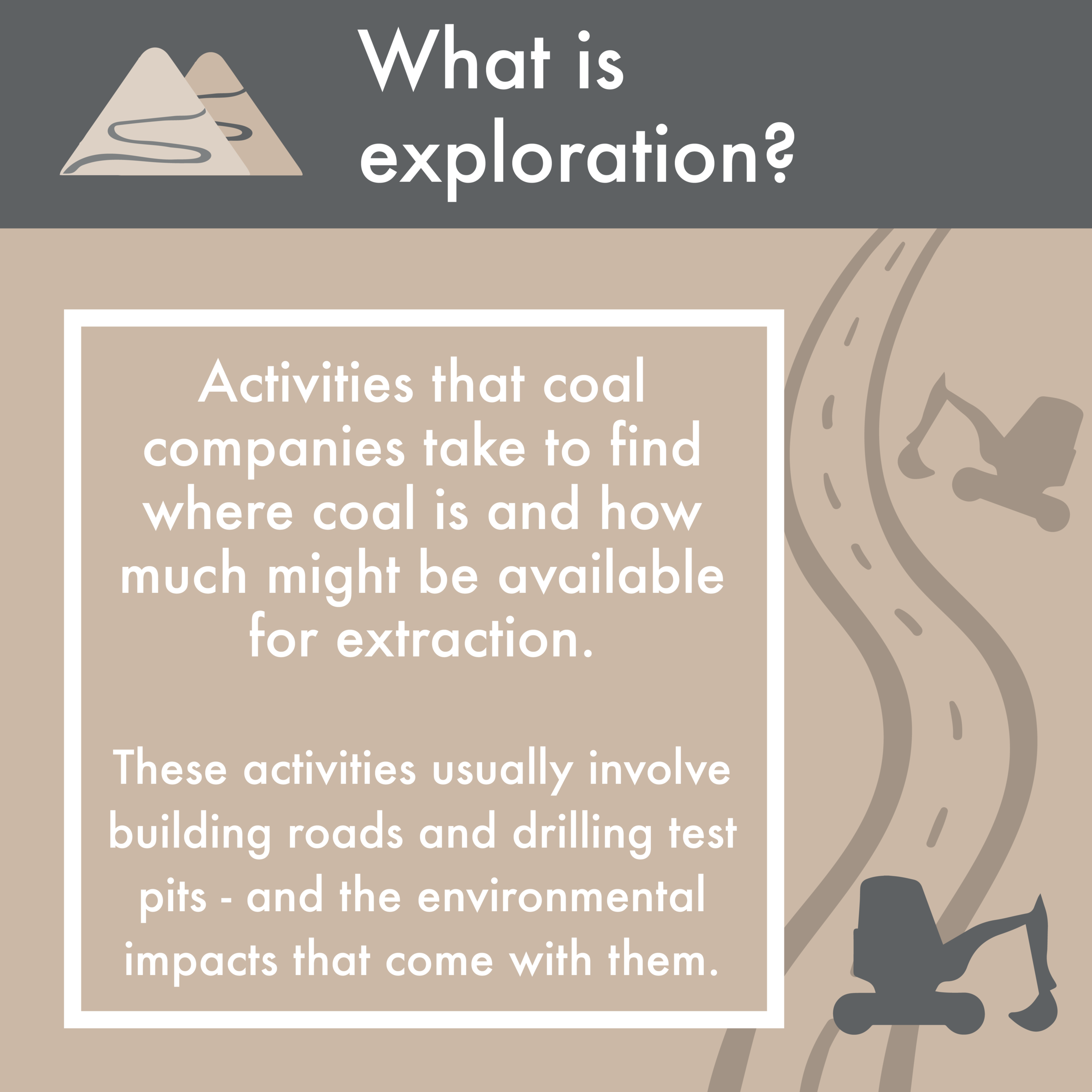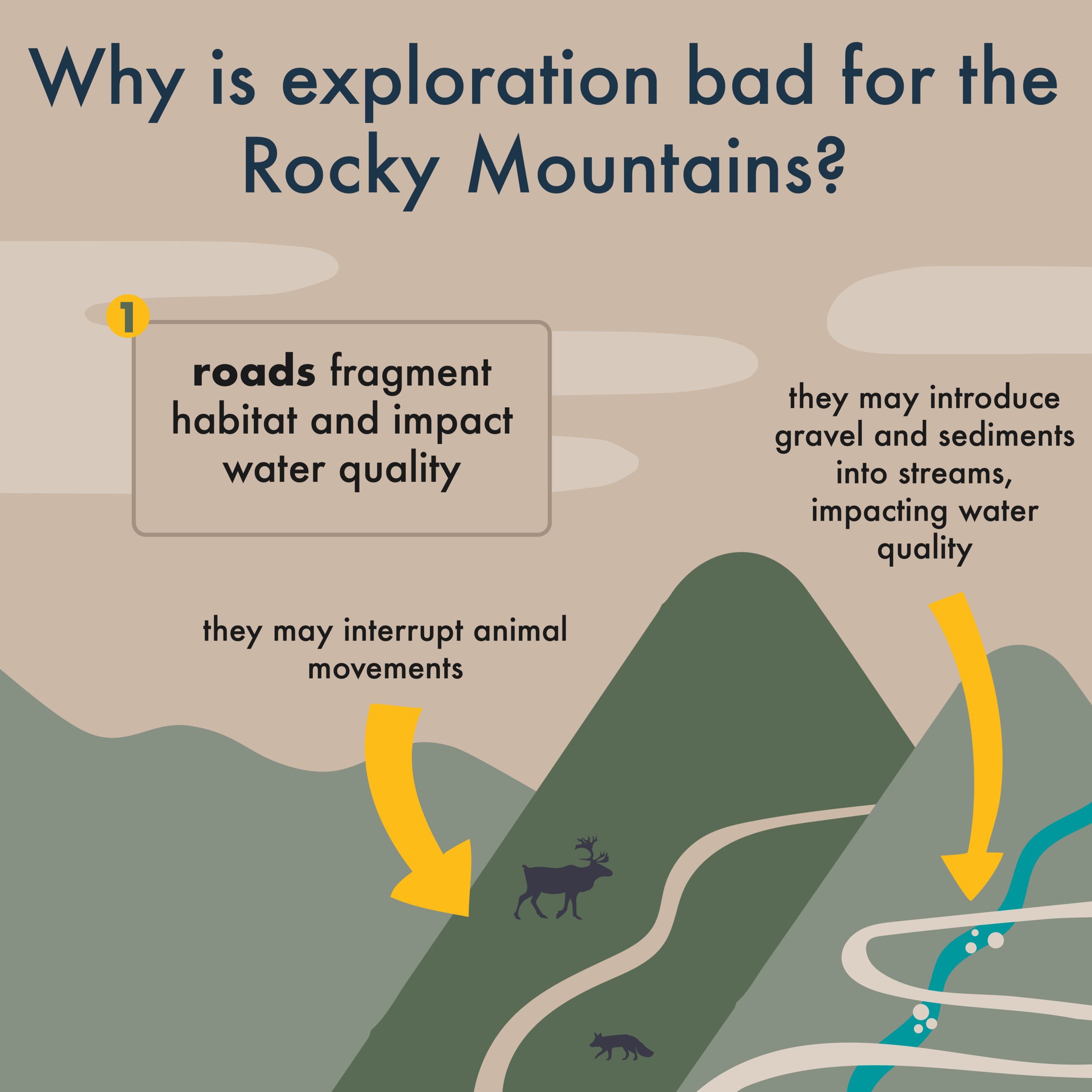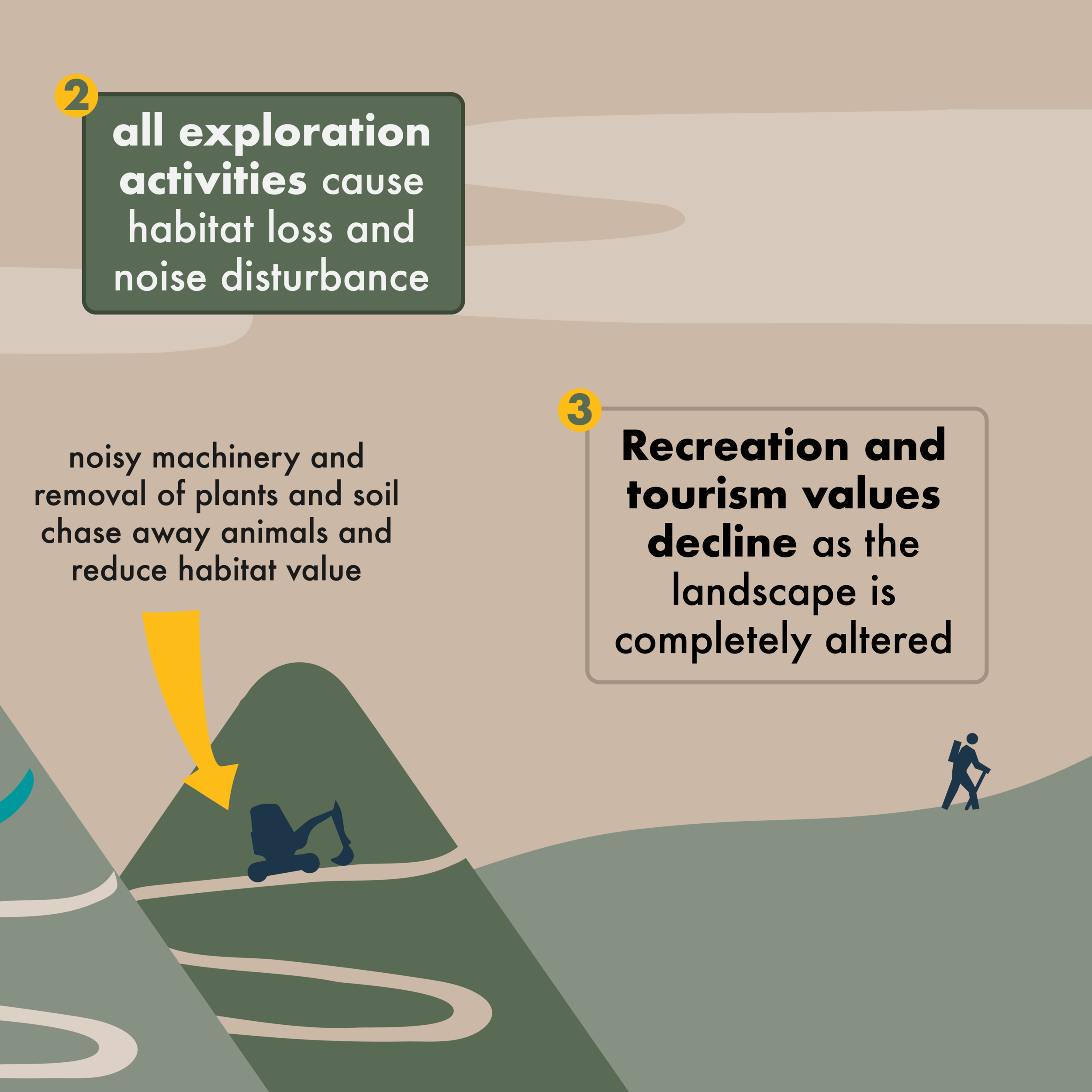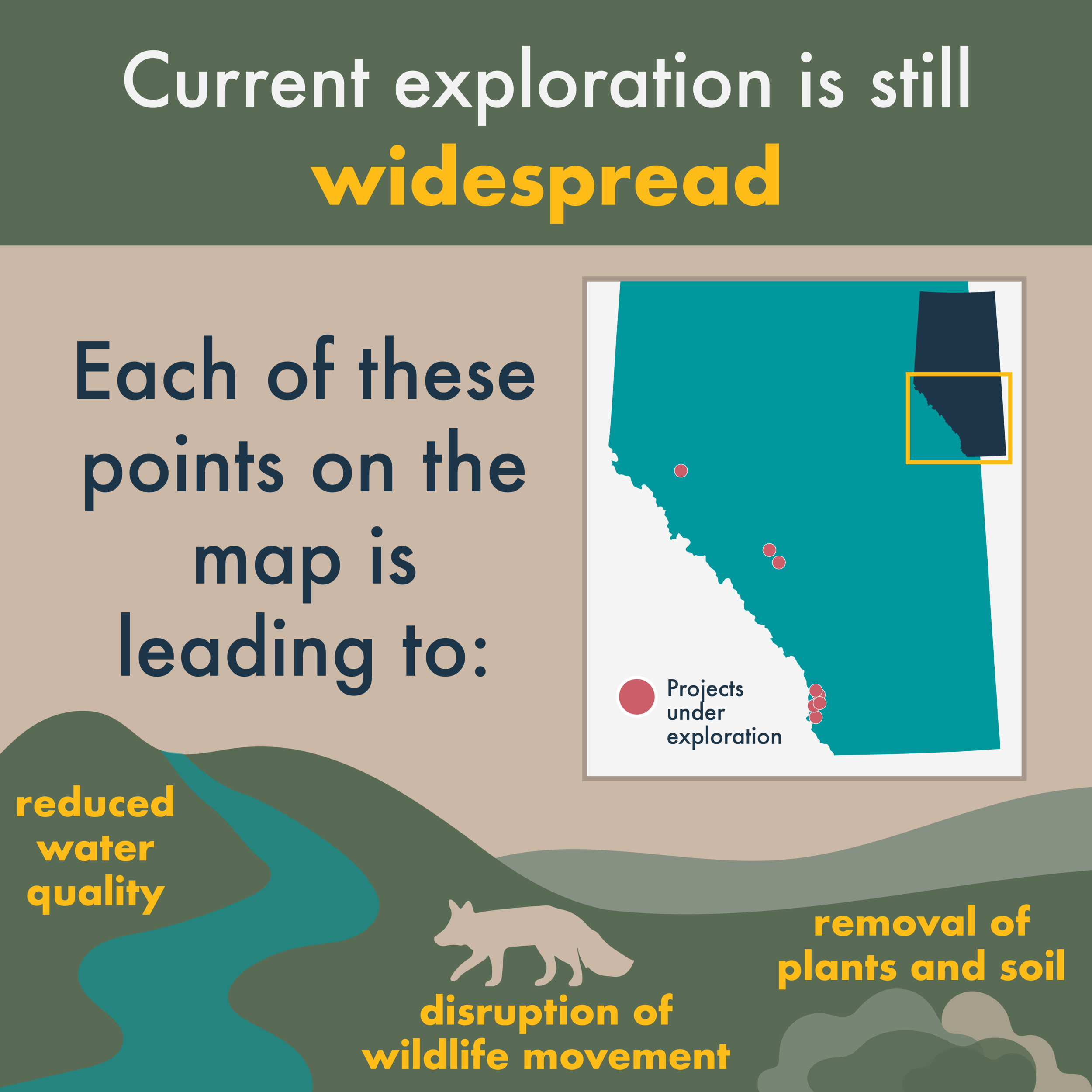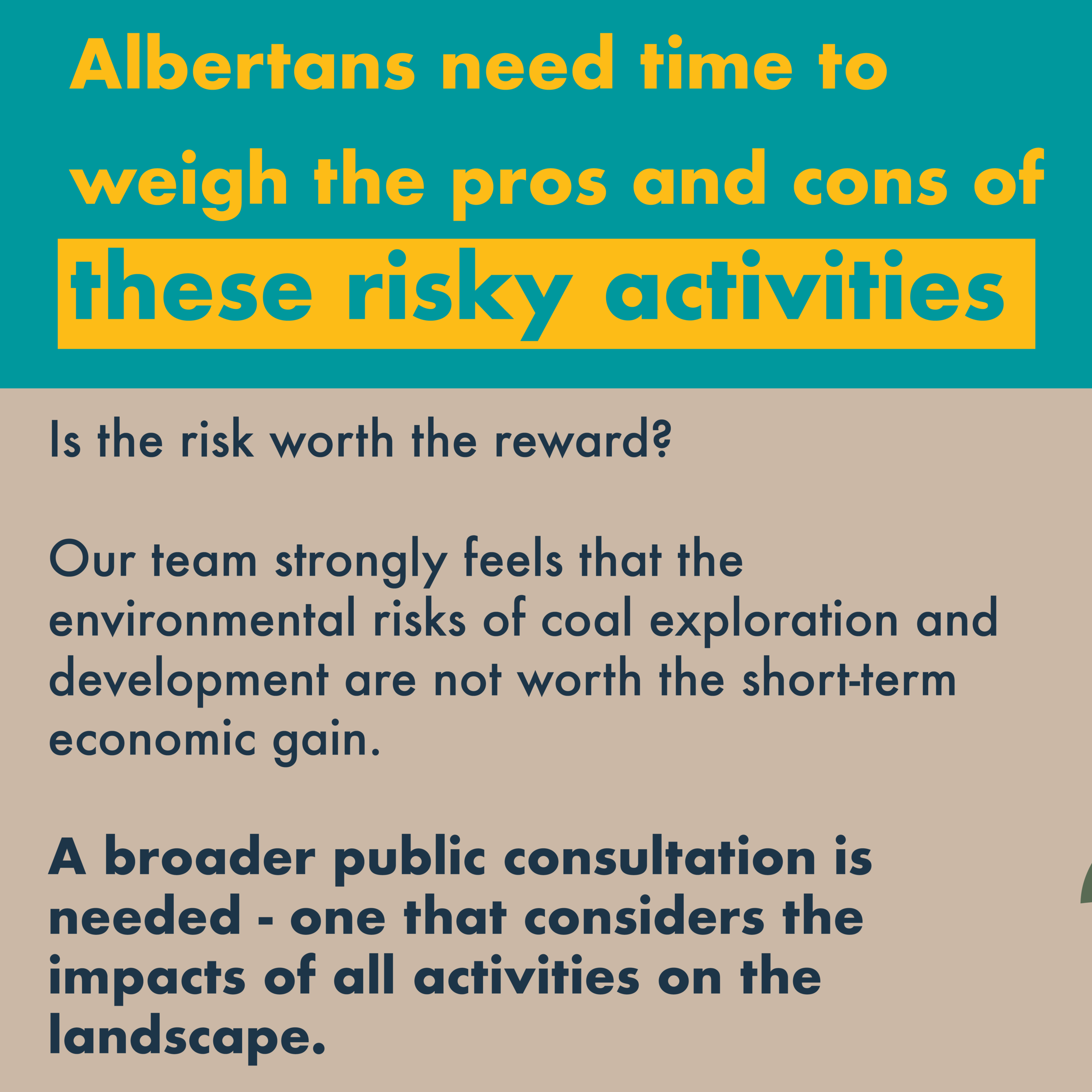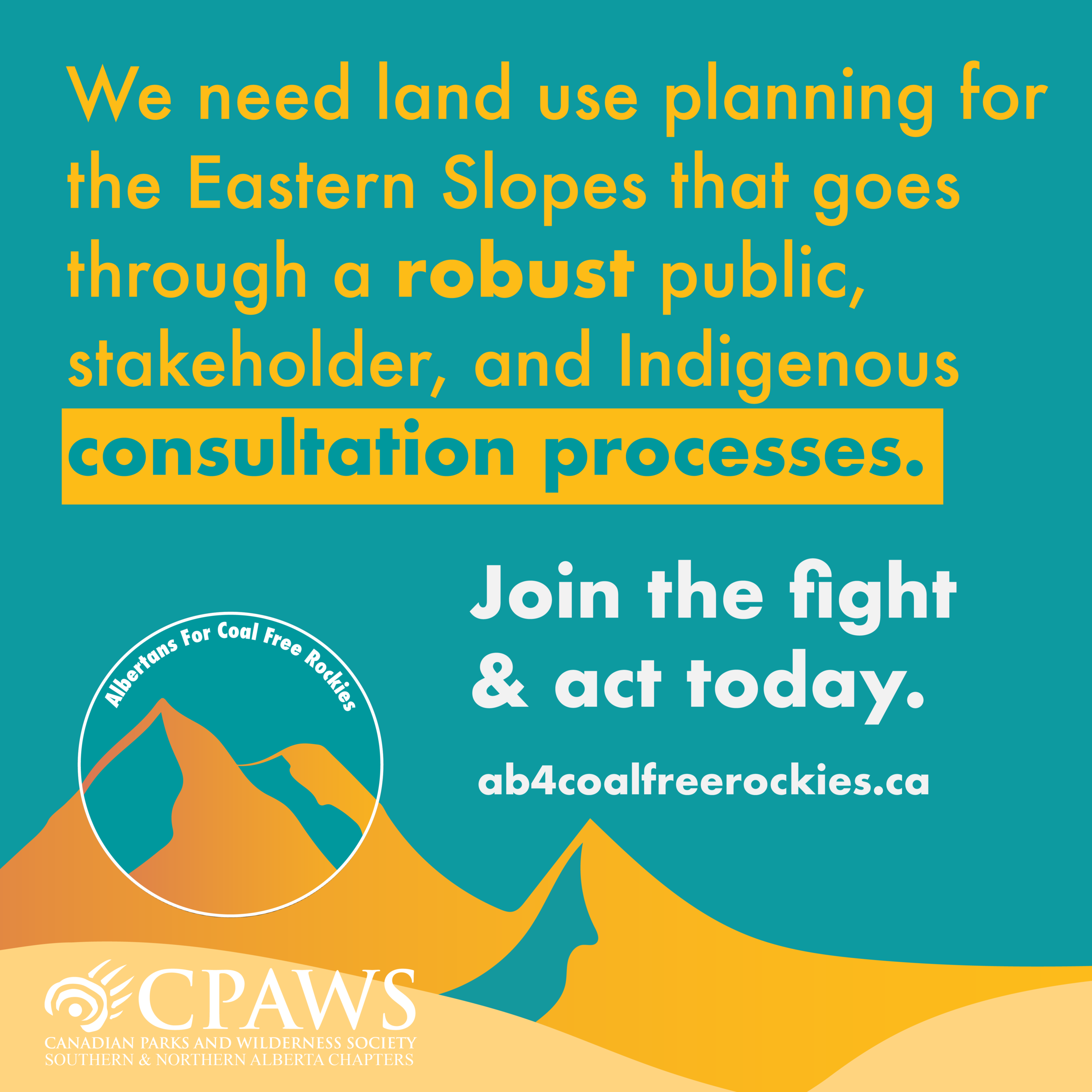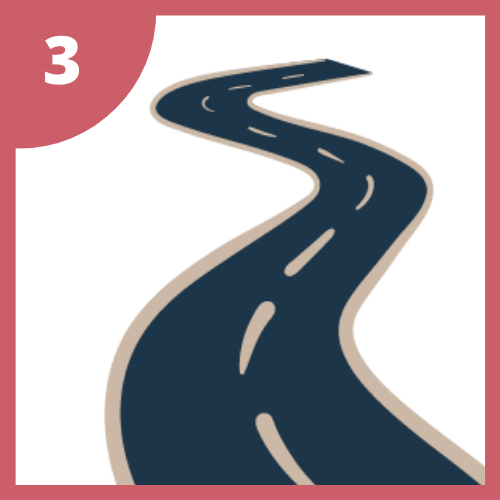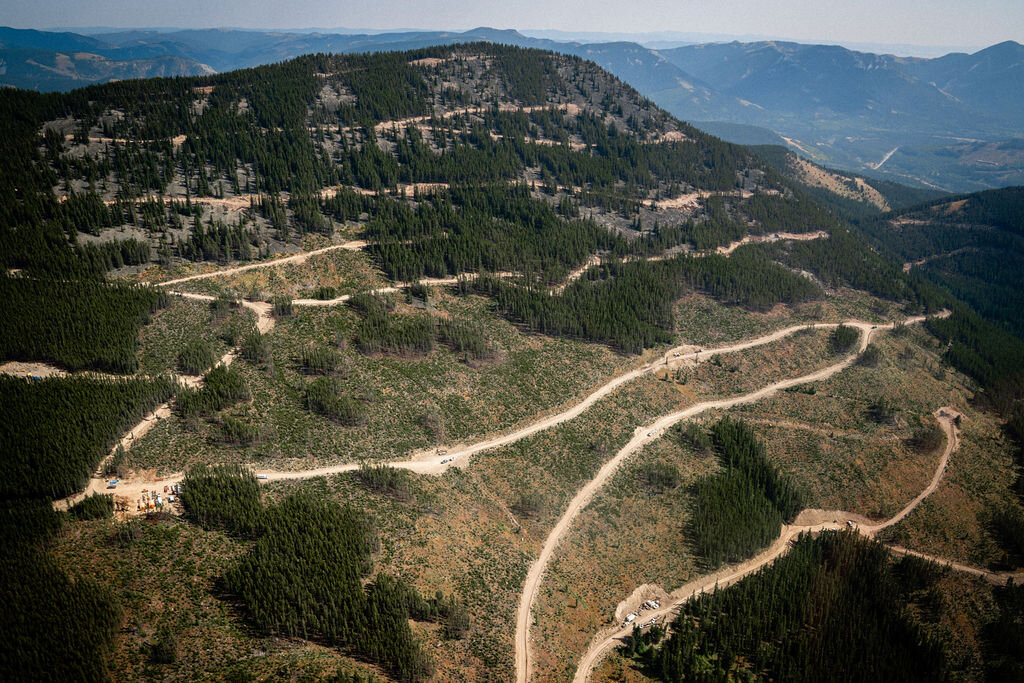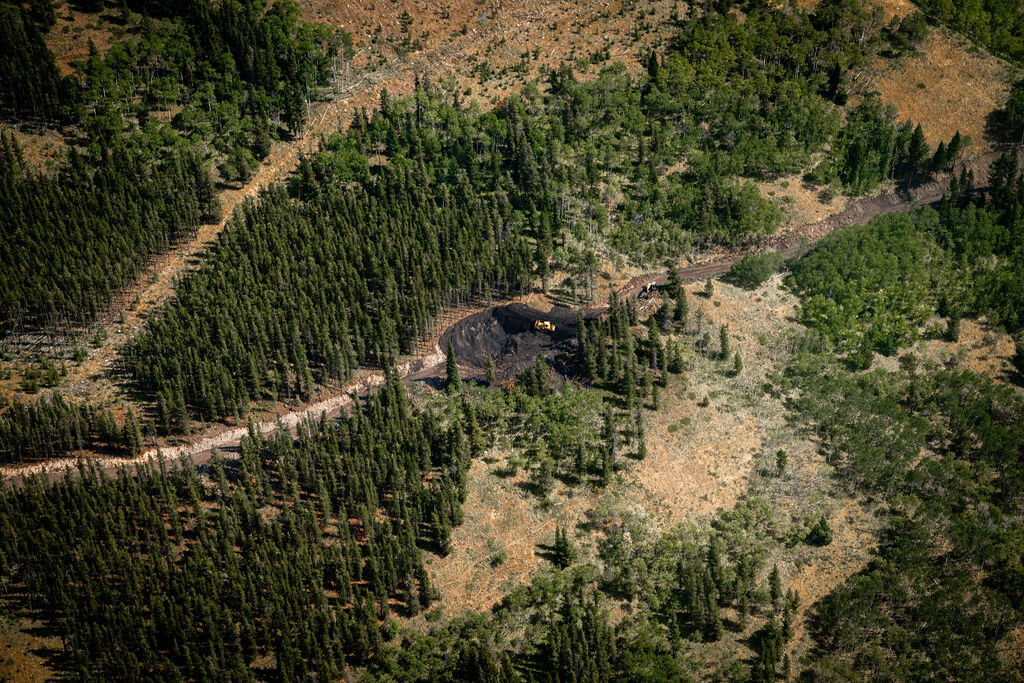Life of a Mine Part 3 - Exploration
In this series we’re going to take you from start to finish through the life of an open-pit coal mine in Alberta. Keep reading below to learn about the exploration activities that take place, or click on one of the other stages below to learn more.
Coal exploration is still happening in Alberta, even though it shouldn’t be
“Exploration” refers to activities that coal companies take on the landscape to find where coal is and how much might be available for extraction. The main technique used to locate and assess coal deposits is drilling test pits at regular intervals across the landscape where coal is suspected (or known) to be, then testing soil and mineral samples extracted from the pits. Creating these lines of test pits requires building lots of temporary roads across the area that might be developed for coal mining.
These exploration activities should only take place after thorough public consultation on whether coal development is desired in the area – a step that has been sorely missing, and which the Government of Alberta’s recent decision to start a long-overdue public consultation process has drawn attention to.
Coal mining exploration roads in the southern Rocky Mountains, photo by East Cherry
What does coal exploration look like on the landscape?
We don’t need to look any further than the other side of the Rockies to know what exploration and development of open-pit coal mines looks like. In B.C.’s Elk Valley, open-pit coal mining has been a part of the landscape for years, with exploration roads and test pits crisscrossing a huge area of the valley.
Coal exploration road leading to a test drill pit in the southern Rocky Mountains, photo by East Cherry
Even before mines are approved,
exploration activities have significant environmental impacts
Beyond the lack of public consultation on coal exploration activities in Alberta, which is a strong reason to ask for a stop to these activities, our team is asking for a full stop on exploration in all areas of the Rocky Mountains because of its environmental impacts.
Roads fragment habitat and impact water quality
Roads cause trouble for wildlife and ecosystems because they make it more difficult for animals to move across the landscape to meet daily or seasonal needs (habitat fragmentation), and when animals try to cross roads they can fall victim to roadkill accidents.
Roads can also have a huge impact on how water moves across the landscape and the quality of that water. For example, roads that cross over streams can end up contributing a lot of dust, dirt and gravel into the stream system. Adding too much of these things into the stream can change the chemistry of the water, cause physical damage to drinking water quality, fish habitat, and reducing the availability of oxygen in the water.
During the road construction process, the flow of streams under roads can also end up being modified such that fish can no longer pass through (e.g., a “shelf” is created that fish cannot climb up). Cutting off fish movement patterns and migration routes can end up stranding fish or preventing them from reaching breeding areas.
And these are just a few examples of the impacts of roads on the environment – there is a lot more we could talk about!
Still Drilling
This map showcases where exploration has been done or approved in Alberta’s Rocky Mountains.
All exploration activities cause habitat loss and noise disturbance
Disturbance to the land during coal exploration activities includes significant amounts of temporary construction of access roads and drill sites. These activities disrupt plants and animals, both during the construction and implementation of the exploration activities and in the many years to follow (even after roads are no longer being used). These disturbances also impact the nature experiences of people recreating on the landscape, block public access to areas under exploration, and impact the activities of other land users that rely on the region for livelihoods. They also contribute to larger impacts on the landscape as they pile up on top of forestry, quarrying, oil and gas exploration, and recreational trails. The compounding effects of all these activities are called cumulative impacts.
Because of the issues associated with coal exploration, simply ensuring that coal mines are rejected is not the only important goal for protecting Alberta’s Eastern Slopes. It is important that Albertans raise their voices to ask for a full stop on all coal exploration in this region while we discuss as a province whether we even want coal developments to move forward at all.
Albertans need the time to weigh the pros and cons of these risky activities
Is the risk worth the reward? Our team strongly feels that in Alberta’s Rockies, the environmental risks of coal exploration and development are not worth the short-term economic gain. Regardless of how one might feel about this issue, it is problematic that exploration activities were approved under-the-table without giving Albertans any chance for input.
Write your letter today to ask the Government of Alberta to put a full stop on coal exploration in our Rockies.
Share your vision for the future of the Eastern Slopes.

